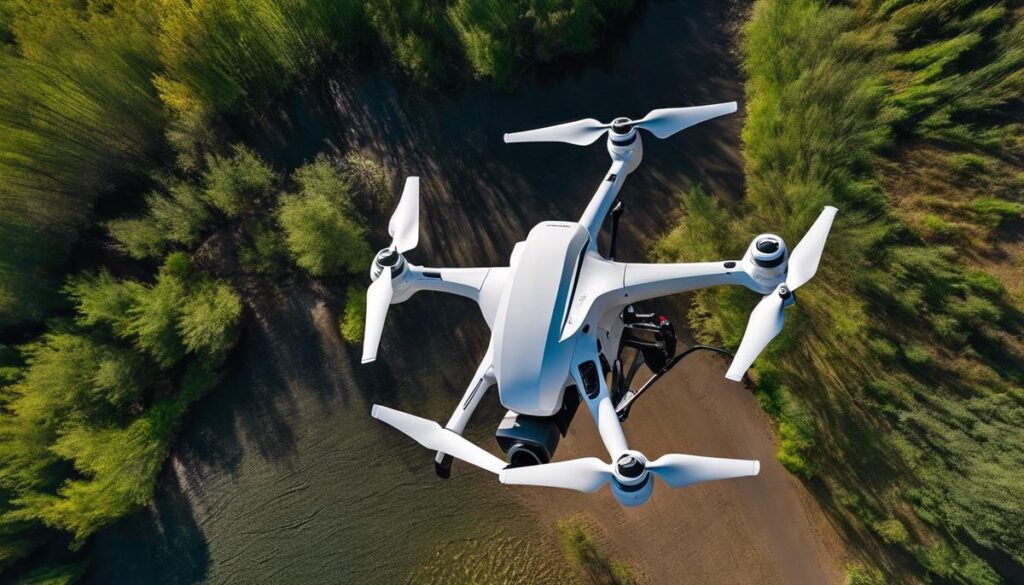The fascinating world of drone technology has seen significant advancements over the years, with DJI leading the pack as a prominent player in the industry. Acquiring knowledge about their cutting-edge drones, such as the DJI Mini 3 Pro and Air 2s, can be both exciting and rewarding for enthusiasts and hobbyists. From understanding their capabilities and unique features to mastering flight controls and commands, this journey into the realm of drones is sure to elevate your passion and skills to new heights.
Introduction to DJI Drones
In recent years, DJI has emerged as a leading drone manufacturer known for its innovative and high-quality drone products. With a wide range of offerings that cater to various user requirements, ranging from professional aerial photographers and filmmakers to casual hobbyists, DJI has managed to carve out a niche for itself in the drone market. Among their latest offerings are the DJI Mini 3 Pro and the DJI Air 2S, both of which have garnered significant attention owing to their advanced features and capabilities. Understanding the differences between these two drones as well as the main features of DJI drones, in general, can help enthusiasts and hobbyists identify the right drone that matches their specific requirements.
When it comes to the DJI Mini 3 Pro, this particular drone is designed for users who require a lightweight, compact, and easy-to-use drone that offers excellent image quality. One of the main highlights of the Mini 3 Pro is its portability, thanks to its foldable design and lightweight construction, which allows users to easily carry it around in a backpack. Despite its small size, the Mini 3 Pro is equipped with a powerful camera capable of capturing stunning 4K videos and high-resolution stills, making it an ideal choice for those who are passionate about aerial photography.
On the other hand, the DJI Air 2S has been designed for more advanced users who are looking for a drone that offers superior performance and more professional features. It boasts a larger sensor, allowing for better image quality and low light performance, as well as a range of shooting modes such as HDR, hyperlapse, and panorama, which is ideal for content creators who wish to experiment with different photography and videography styles. Additionally, the Air 2S is equipped with advanced obstacle avoidance and autonomous flight features, enabling it to maneuver seamlessly in complex environments.
DJI drones are particularly well-known for their intelligent features and easy-to-use operation, which is evident in both the Mini 3 Pro and the Air 2S. The drones come with the DJI Fly application, which allows users to easily plan and execute flight paths, monitor their drones in real-time, and edit and share their captured media. Both drones also support DJI’s OcuSync transmission system, which offers an extended range of operation and greater stability during flight, enhancing the overall user experience in various environments.
DJI has established itself as a key player in the drone industry with its wide range of innovative offerings, such as the DJI Mini 3 Pro and the DJI Air 2S. These drones boast impressive features like powerful cameras, intelligent flight modes, and user-friendly operation, making them suitable for both enthusiasts and professionals alike. A thorough understanding of these key features and capabilities, along with the differences between the Mini 3 Pro and the Air 2S, can help drone aficionados make a more informed decision best suited for their individual requirements.
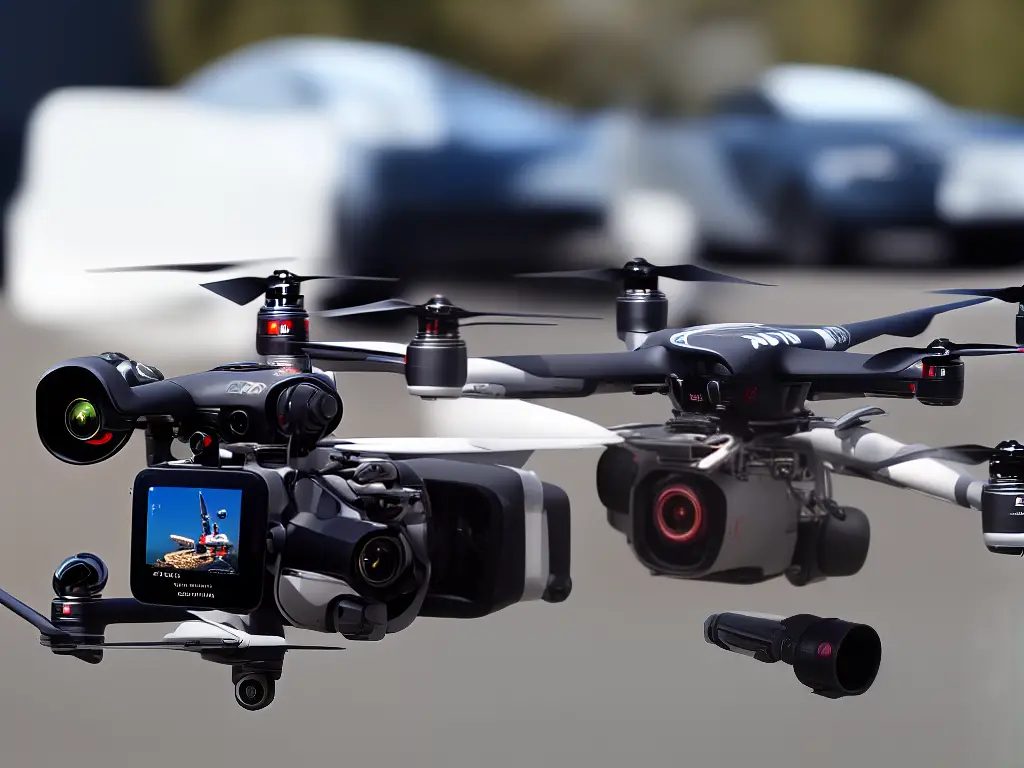
DJI Mini 3 Pro Overview
The DJI Mini 3 Pro, an upcoming addition to DJI’s expansive arsenal, aims to combine the lightweight and portability of the Mini series with advanced features typically reserved for the Pro and Air lines. One of the most significant advantages of the Mini 3 Pro when compared to the DJI Air 2S is its weight. Falling under the 250-gram threshold, this drone caters to hobbyists and enthusiasts who desire a more effortless flying experience without the need for extensive registration and regulatory compliance common in many countries, thus providing a smooth segue between these two models.
Camera quality and image transmission capabilities are always essential factors to consider when purchasing a drone. The DJI Mini 3 Pro is expected to enhance the camera system of its predecessor significantly. While the Air 2S boasts a 1-inch CMOS sensor with 20MP image resolution and 5.4K video capabilities, the Mini 3 Pro is rumored to possess a smaller yet powerful sensor, producing high-quality images and 4K video. This compact camera system would allow the Mini 3 Pro to provide impressive imaging capabilities in a lightweight form factor, making it an enticing choice for users who prioritize portability but still demand high-quality results.
Flight time and performance are crucial when considering the DJI Mini 3 Pro versus the Air 2S. The Air 2S has a maximum flight time of up to 31 minutes, which is impressive for its size and capabilities. While there isn’t official information on the Mini 3 Pro’s flight time, it is expected to at least match the previous generation’s 31-minute flight time, if not surpass it. By increasing flight time, the Mini 3 Pro allows users to explore more landscapes and aerial photography opportunities consistently.
In addition to imaging capabilities and flight time, other features differentiate the DJI Mini 3 Pro from the Air 2S. These may include the inclusion of OcuSync, DJI’s proprietary transmission technology that provides greater range and stability to the drone’s connection to the remote controller. The Air 2S already benefits from the OcuSync technology, but integrating the same feature into the Mini 3 Pro will significantly enhance its appeal to both hobbyists and professionals seeking a lightweight drone with reliable connection quality.
Finally, the obstacle avoidance system is an essential factor to examine in the comparison between DJI Mini 3 Pro and Air 2S. While the Air 2S comes with APAS 4.0, providing omnidirectional obstacle sensing, it is unclear whether the Mini 3 Pro will have similar sensors. If the Mini 3 Pro does incorporate an obstacle avoidance system comparable to the Air 2S, it will enhance safety and overall flight experience, making it an even more formidable competitor within the drone market.
The DJI Mini 3 Pro, anticipated to be a game-changing drone in the lightweight category, is expected to offer remarkable capabilities that can compete with bigger models like the DJI Air 2S.
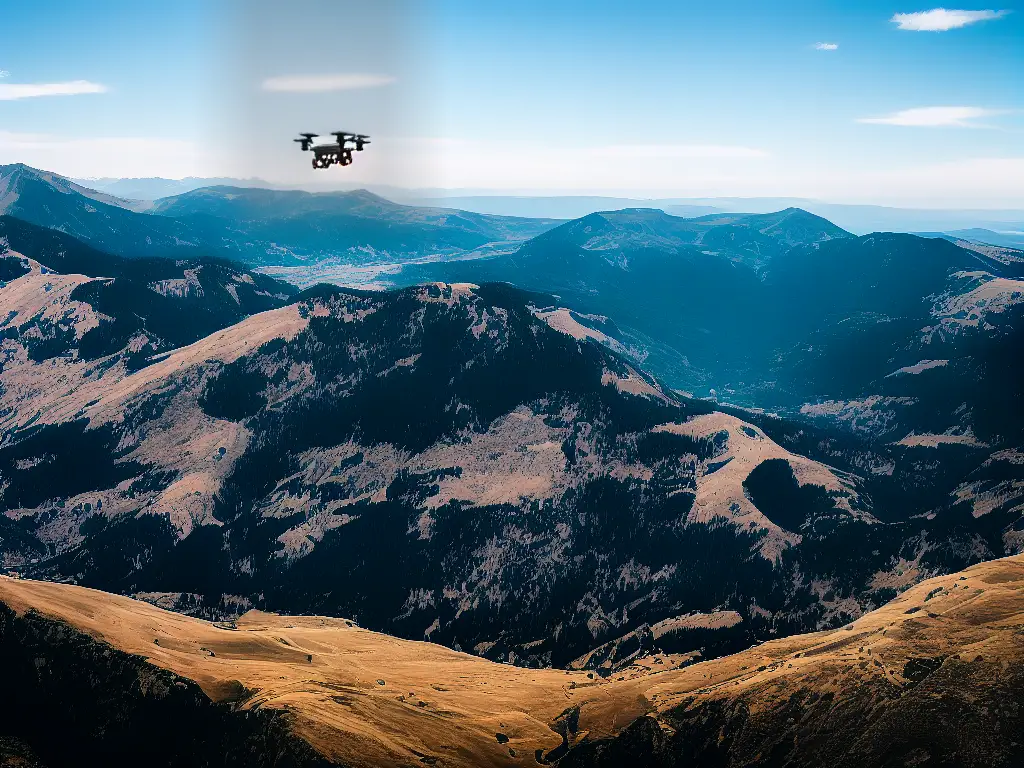
DJI Air 2s Overview
Moving on to a crucial aspect, let’s compare the camera capabilities of the DJI Mini 3 Pro and Air 2S. Equipped with a potent 1-inch CMOS sensor, the DJI Air 2S supports a 5.4K video resolution and 20MP still images, delivering exceptional image quality and improved low-light performance. On the other hand, while the DJI Mini 3 Pro has not been released yet, it is presumed to have an upgraded camera compared to its predecessor, the Mini 2, featuring 4K video capability and 12MP still images.
In terms of flight time, the DJI Air 2s provides an impressive up to 31 minutes of flight time on a single charge, allowing you to capture more footage and fly for longer periods. The DJI Mini 3 Pro is rumored to have a similar or improved flight time compared to its predecessor, the Mini 2, which offers approximately 31 minutes as well. Thus, both drones excel in providing extended flight times, essential for enthusiasts and hobbyists.
When it comes to performance, the DJI Air 2s features four-directional obstacle sensing and Advanced Pilot Assistance Systems (APAS) 4.0, which provides an additional level of safety during flight. It can detect and avoid obstacles in its path autonomously and enable safer flights in challenging environments. Although the DJI Mini 3 Pro’s specifications have not been released yet, it is expected to have a more advanced obstacle avoidance system compared to the Mini 2, offering improved performance and safety features.
The DJI Air 2s supports a variety of add-on accessories, further enhancing its versatility and capabilities. Some popular accessories include the DJI Smart Controller, which allows for improved control and easier navigation; ND Filters for better control over lighting conditions and exposure settings; and the Fly More Combo, which comes with additional batteries, propellers, and a carrying case, among other components. While the DJI Mini 3 Pro has not been released yet, it is likely to support a similar or better range of accessories, enhancing the overall user experience.
DJI, a leading drone manufacturer in the industry, has various drone models to cater to enthusiasts and hobbyists with different needs. Among the popular options, the DJI Mini 3 Pro and Air 2s offer unique features and benefits that suit various preferences. Comparing the two models, both cater to different users: the Mini 3 Pro is suitable for beginners and casual enthusiasts, while the Air 2s is perfect for advanced users seeking professional-grade features.
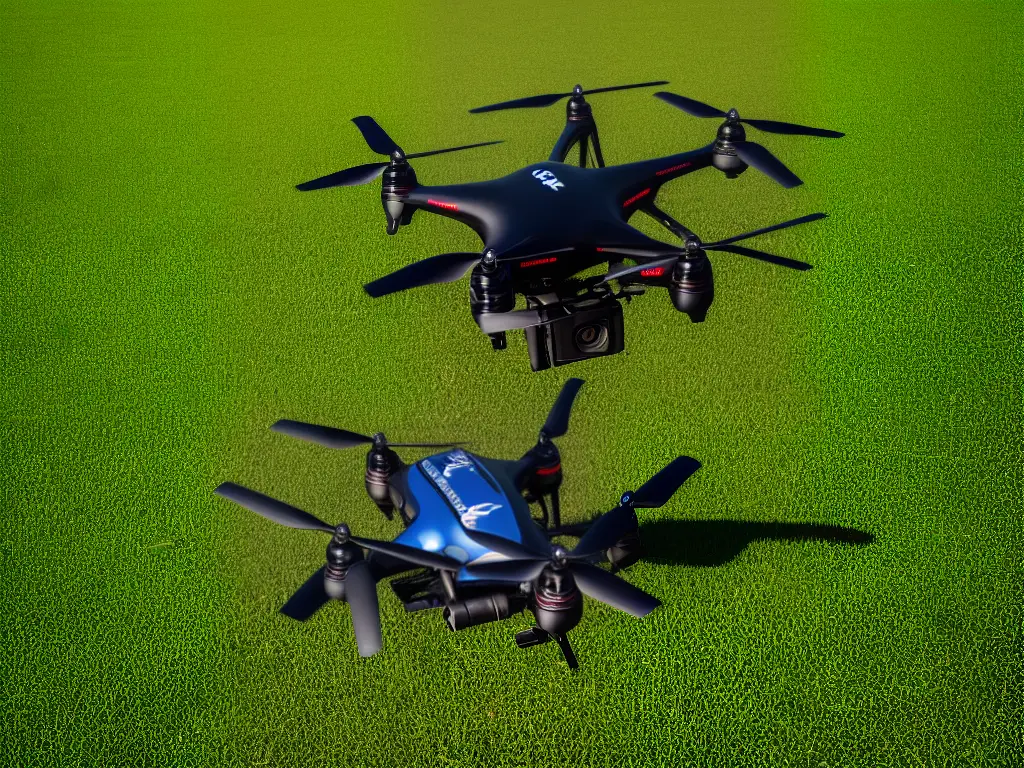
Comparison of Mini 3 Pro and Air 2s
The DJI Air 2s comes with additional intelligent flight modes, such as ActiveTrack 4.0, Spotlight 2.0, and Point of Interest (POI) 3.0, which provide users with an array of creative shooting options. These features make the Air 2s ideal for capturing dynamic, professional-grade aerial footage and photos. In comparison, the DJI Mini 3 Pro, though not yet available, is expected to offer similar or upgraded intelligent flight modes, enabling enthusiasts and hobbyists to capture stunning imagery with ease. This seamless integration of advanced features in both drones ensures that users can explore their creativity and produce incredible aerial content.
Performance
In terms of performance, the DJI Mini 3 Pro is designed for entry-level pilots looking for a compact and easy-to-fly drone. With its small form factor, lightweight (sub 250g) design, and beginner-friendly features such as GPS and intelligent flight modes, the Mini 3 Pro is a popular choice for hobbyists who prioritize portability and ease of use. On the other hand, the DJI Air 2s caters to the more advanced users with its professional-grade camera, allowing 5.4K video capture and 20MP still images. Additionally, the Air 2s features upgraded sensors, longer flight times, enhanced speed, and obstacle avoidance, setting it apart from the Mini 3 Pro in terms of in-flight performance.
Environment
When it comes to different environments, the DJI Mini 3 Pro shines in urban settings, primarily due to its lightweight design, making it suitable for shooting casual aerial content without the need for professional cinematic quality. The Air 2s, however, excels in more demanding, complex situations with its obstacle avoidance capabilities, allowing users to navigate safely through challenging landscapes. Moreover, the Air 2s performs better in windy conditions due to its larger size and increased stability.
Price
Comparing the price points of these drones, the DJI Mini 3 Pro targets a more budget-conscious audience as the device itself and the accessories are relatively more affordable. On the contrary, the DJI Air 2s is a higher-tier drone with a higher price tag, appealing to seasoned enthusiasts looking to upgrade their gear or new users who want to invest in professional-grade equipment from the get-go.
Overall Value
Choosing between the DJI Mini 3 Pro and the Air 2s for enthusiasts and hobbyists ultimately depends on the individual’s specific needs and preferences. The Mini 3 Pro is an ideal choice for those who prioritize a user-friendly, budget-friendly, and portable option, offering all the necessary features for casual aerial content creation. On the other hand, the Air 2s is a worthy investment for users seeking professional-grade results, top-notch camera quality, and advanced flight performance to capture stunning high-quality aerial footage in various environments.
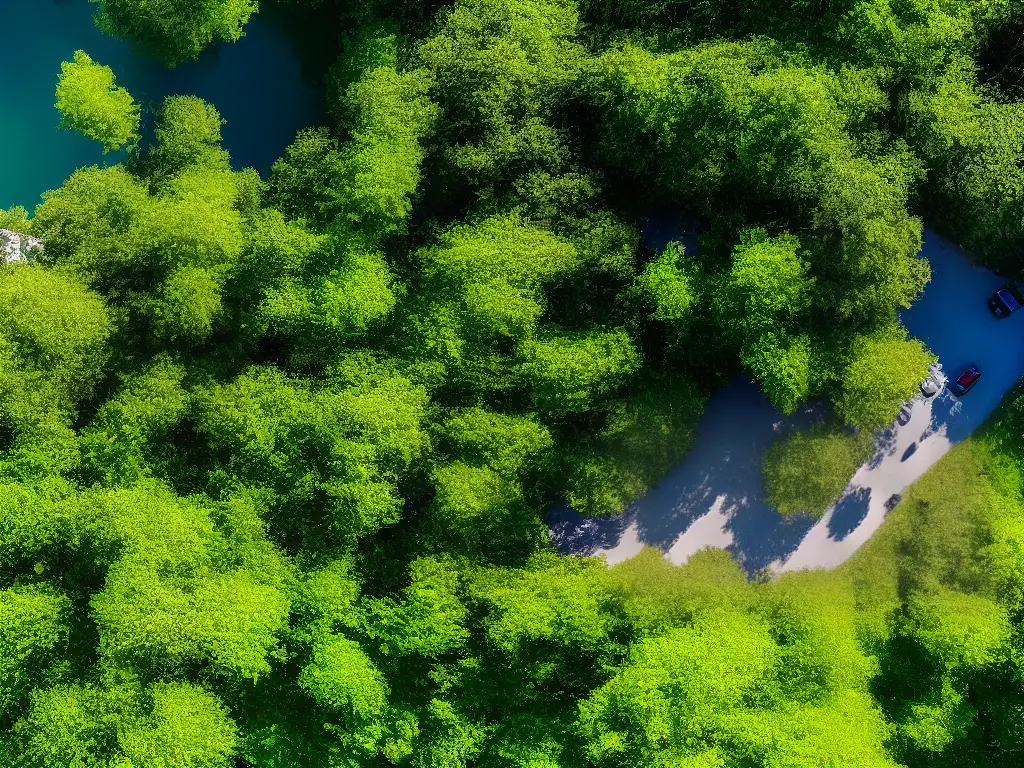
Flight Controls and Commands
Moving on to flight controls and commands, both the DJI Mini 3 Pro and Air 2s boast user-friendly interfaces designed to provide smooth and stable flight experiences. Operators of both drones can easily execute essential pitch, roll, throttle, and yaw commands using the included remote controller, enabling smooth forward, backward, left, and right movement, as well as altitude adjustments and direction changes. This seamless transition between the two drones ensures that enthusiasts and hobbyists can focus on capturing the perfect aerial content, regardless of their choice of drone.
One of the differences between these two drones is found in their respective hovering stability. The DJI Mini 3 Pro is equipped with GPS and downward-facing sensors, which allow for precision hovering and altitude hold. These features ensure that the drone maintains a stable position even in windy conditions. On the other hand, the Air 2s takes it a step further by incorporating Advanced Pilot Assistance Systems (APAS) 4.0, which intelligently and automatically avoids obstacles by determining the best path around them, providing an added level of safety and confidence during flight.
Both drones come with advanced flight modes that are easily accessible through the companion DJI Fly app. These modes can significantly enhance the user’s flight experience, allowing them to capture unique perspectives efficiently. For instance, both the Mini 3 Pro and Air 2s feature QuickShots, which are pre-programmed flight patterns that allow users to capture stunning aerial footage with just a few taps on the screen. Some of these QuickShots include Dronie, Circle, Helix, and Rocket, each offering a unique perspective to enhance the videography experience.
In addition to the QuickShots, the DJI Air 2s takes it up a notch with its MasterShots feature. MasterShots automatically designs a flight plan and selects from a range of professional-quality shots, delivering impressive results with minimal input from the user. While the Mini 3 Pro doesn’t have MasterShots, it still comes with its own set of unique flight modes, such as CineSmooth mode, which provides slower, more refined flight speed for smooth and cinematic shots.
Another area where these two drones differ in terms of flight controls and commands is in the return-to-home (RTH) feature. While both drones have RTH capabilities, the Air 2s has a more advanced fault-tolerant GPS implementation with intelligent RTH. If it encounters any connectivity or battery life issues, the drone will safely navigate its way back to the user, using its real-time GPS data and obstacle avoidance system. This added layer of redundancy and safety further sets the DJI Air 2s apart from its Mini 3 Pro counterpart, ensuring a secure and uninterrupted flight experience for enthusiasts or hobbyists alike.
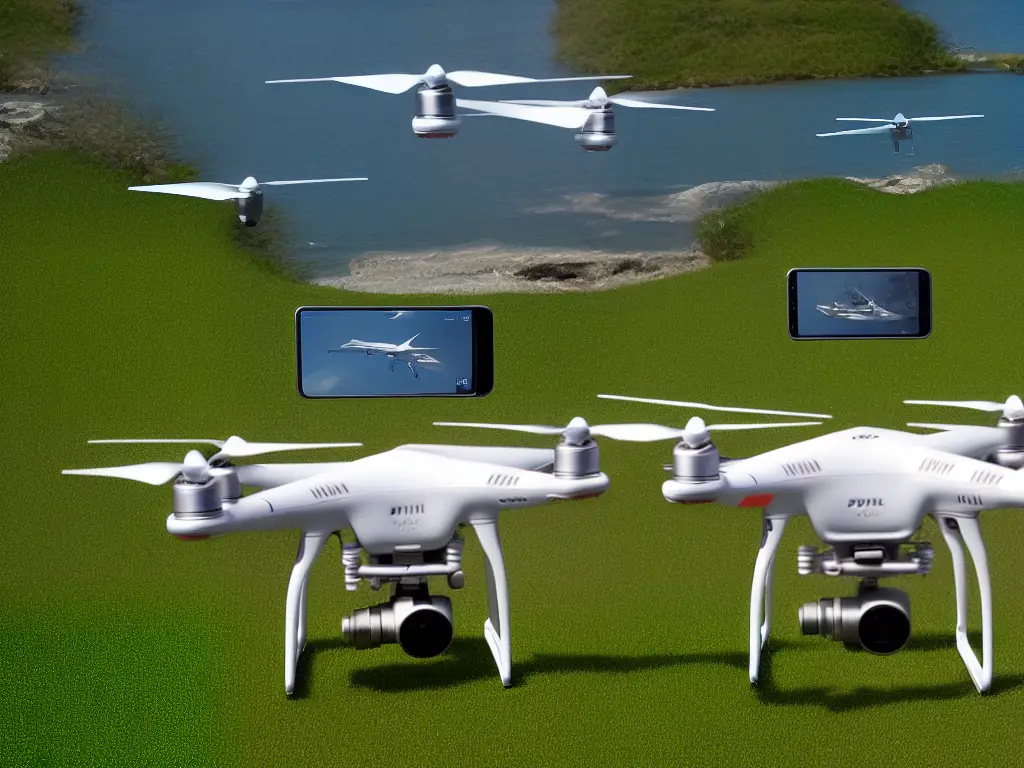
Safety and Regulations
Moving on to the subject of safety and regulations, it is vital for drone operators to understand the importance of these aspects when flying advanced models like the DJI Mini 3 Pro and Air 2s. Although both drone models come equipped with built-in safety features to ensure responsible and secure flights, users must still familiarize themselves with the specific laws and guidelines applicable to their region. These regulations can significantly vary depending on the country or jurisdiction you are flying in, and being aware of your local rules is crucial to avoid fines or penalties. Whether you are an enthusiast or hobbyist, understanding and adhering to safety guidelines will vastly enhance your overall drone experience with both the Mini 3 Pro and Air 2s.
Registration requirements for drones depend on their weight and how they are being used. The DJI Mini 3 Pro, which is not yet announced or released, may have a similar weight to the Mini 2 that falls under 250 grams, and thus, in some countries like the United States, it may be exempt from registration. On the other hand, the DJI Air 2S weighs 595 grams, and registration is required in many countries, including the US. Both devices should be registered with the relevant aviation authority if used for commercial purposes, regardless of their weight. Confirming with the local governing body for drones is always a good idea to stay compliant.
Flying laws vary across different regions, and understanding these restrictions is crucial for safe operation of the DJI Mini 3 Pro and Air 2s. In general, you should adhere to basic guidelines, such as keeping the drone within your line of sight, maintaining a safe distance from people or property, and flying under 400 feet in altitude (in the USA). Specific local regulations may also impose additional requirements or restrictions, such as no-fly zones near airports or critical infrastructure. Moreover, national parks, wildlife reserves, and other environmentally-sensitive areas may have their own laws in place to protect the environment from potential harm caused by drones.
Both DJI Mini 3 Pro and Air 2s are equipped with safety features that help operators maintain control of their drone while adhering to flying laws. For example, DJI’s GEO system provides pilots with real-time information on restricted areas, ensuring users are aware of the no-fly zones. Additionally, features such as obstacle detection and collision avoidance, GPS-based Return-to-Home, and altitude limits offer extra layers of safety. Operators are encouraged to learn about these features and understand how they work to maximize their effectiveness during each flight session.
Becoming skilled in piloting drones like DJI Mini 3 Pro and Air 2s starts with developing good habits for safe flying beyond the technical features available in these devices. Some best practices include checking the weather forecast before flying, never flying under the influence of alcohol or drugs, and practicing basic maneuvers in a safe, open area before exploring more advanced settings. It is also essential to monitor the drone’s battery level and make sure to land safely before the battery is depleted. By developing these habits, you can contribute to a safer and more enjoyable experience for both yourself and those around you.
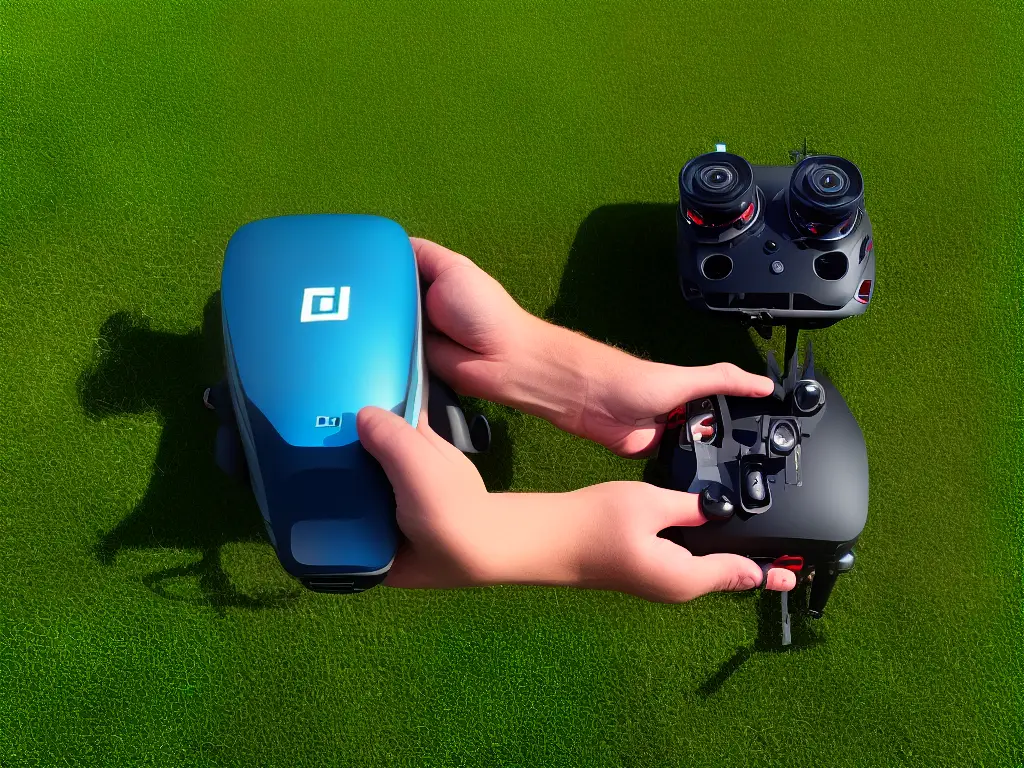
Capture Techniques and Camera Settings
Another aspect that can contribute to increasing your skills as a DJI Mini 3 Pro and Air 2s drone pilot is mastering the array of capture techniques and camera settings they offer to enhance your aerial photography and videography. One such technique is the use of autonomous flight modes, such as waypoint or orbit. These modes allow you to plan and execute complex aerial maneuvers, which can lead to more engaging and dynamic content, particularly when combined with manual gimbal control. Experimenting with different autonomous modes for both drones will enable you to deliver unique perspectives and add variety to your portfolio, showcasing your expertise as a skilled drone pilot.
In addition to autonomous flight modes, understanding the camera settings on the DJI Mini 3 Pro and Air 2s is crucial to capturing professional-quality content. Both drones offer adjustable camera settings, ranging from shutter speed, ISO, and exposure value (EV) to white balance, allowing photographers to have more control over their shots. Taking the time to learn and fine-tune these settings for different lighting conditions and subjects will result in a more polished and visually appealing final product.
Using various resolution and frame rate options is another way to enhance your captured content with the DJI Mini 3 Pro and Air 2s. Both drones offer 4K capabilities, which can significantly improve the quality of the overall footage, especially when downscaling for online platforms or mixing with non-4K content. In addition, selecting a higher frame rate, such as 60fps, will allow smooth motion and the flexibility to create slow-motion effects in post-production. Understanding the impact of resolution and frame rate adjustments is essential for producing high-quality, diverse content with these drones.
For more comprehensive aerial photography, it’s essential to master panorama and HDR techniques on both DJI Mini 3 Pro and Air 2s. These drones come equipped with automated panorama options that seamlessly stitch together multiple photos, creating visually striking up to 180-degree images. Moreover, the Air 2s boasts a SmartPhoto mode, which intelligently captures HDR, hyperlight, and scene recognition images depending on the shooting environment. By taking advantage of these features, you can create professional and eye-catching panoramic shots with ease.
Mastering the art of aerial photography and videography with the DJI Mini 3 Pro and Air 2s requires practicing manual focus control, as both drones offer this feature. By isolating your subject, creating depth, and enhancing the overall visual appeal of your shots, you can maximize the drones’ photographic capabilities. It’s also essential to experiment with different compositions, following the rule of thirds and other basic photography principles, to create more engaging and dynamic imagery. In doing so, you can take your skills with these drones to new heights.

Editing and Post-Production
When deciding between the DJI Mini 3 Pro and Air 2s, it’s important to consider the quality of footage each drone can capture and how that will affect your post-production editing process. Both drones offer remarkable features, but there are key differences that may influence your decision. The DJI Mini 3 Pro, expected to be an upgrade from the DJI Mini 2, is the perfect choice for enthusiasts seeking a lightweight and compact drone with powerful capabilities. On the other hand, the Air 2s boasts a more advanced camera system with the ability to shoot 5.4K video, compared to the expected 4K video offered by the Mini 3 Pro. Weighing these factors against your needs will help you make an informed choice between these two impressive drones.
Learning post-production techniques for editing drone footage will be crucial in turning your aerial captures into a polished final product, no matter which drone you choose. Popular software like Adobe Premiere Pro, Final Cut Pro, and DaVinci Resolve allows users to manipulate various aspects of the footage such as color grading, stabilization, and transitions.
With the higher resolution capabilities of the Air 2s, you’ll have greater flexibility in post-production, enabling you to crop and reframe your shots without losing significant image quality. The DJI Mini 3 Pro may still be able to produce great footage through proper editing, though higher resolution options would offer more flexibility.
Color grading is an essential component of post-production, as it enables the creator to craft a specific mood and visual style. Drone footage from both the DJI Mini 3 Pro and Air 2s can benefit from this technique significantly, transforming their raw footage into professional-looking content. While the color science used in DJI drones generally offers excellent results, it’s still recommended to shoot in a flat or neutral color profile, such as D-Cinelike or D-Log, giving you even greater control over your footage’s final look.
Stabilization is another key element to consider in post-production, as it can help smooth out any shake or jitter from your video, making your footage appear more cinematic. While both the DJI Mini 3 Pro and Air 2s are expected to have great gimbal stabilization, sometimes your footage might benefit from additional software-based stabilization. Programs such as Adobe Premiere Pro and Final Cut Pro offer built-in stabilization tools that can further refine your footage, and specialized tools like Reelsteady GO can provide even more advanced, yet user-friendly, stabilization options.
Last but not least, incorporating creative transitions, titles, and effects can help make your aerial footage more engaging and dynamic. Both the DJI Mini 3 Pro and Air 2s will benefit from the use of these techniques, allowing the creator to communicate their artistic vision effectively. The abundance of tutorial resources available online for these editing techniques makes it easy for enthusiasts to learn and experiment with different styles.
By honing your skills in post-production and editing, your DJI Mini 3 Pro or Air 2s footage can be elevated to greater heights, showcasing the incredible possibilities of drone cinematography. This not only encompasses creative artistry, but also calls for proper maintenance and care of the drones themselves.

Maintaining and Troubleshooting
To keep your DJI Mini 3 Pro and Air 2s in optimal condition, it is essential to follow best practices for maintaining and troubleshooting the drones. Regular maintenance can prevent potential issues and ensure a longer lifespan for your aircraft, letting you continue capturing breathtaking aerial footage with ease.
One crucial aspect of upkeep involves checking the propellers for any signs of damage or wear. Damaged propellers can lead to reduced performance and even create risks during flight. Therefore, it is necessary to inspect them before each flight and replace them when needed, following the manufacturer’s guidelines. By taking care of both the artistic and technical aspects of drone cinematography, you can truly master the craft and get the best results with your DJI Mini 3 Pro or Air 2s.
Calibration of the drone’s compass and IMU (Inertial Measurement Unit) is another vital aspect of maintenance. This ensures the accuracy of the drone’s stability and positioning during flight, reducing the chances of drifting or tilting. Periodically calibrate the compass and IMU, especially if you experience abnormal flight behavior or if you have recently encountered a heavy impact or crash. The DJI Fly app offers step-by-step instructions for compass calibration, and the IMU calibration can be found under the drone’s settings.
In addition to these regular maintenance tasks, you should also routinely update your drone’s firmware. Firmware updates not only provide enhancements to the overall performance and features, but they also address potential bugs and vulnerabilities. Keep an eye on the DJI Fly app for update notifications, and always update your drone’s firmware to the latest version to ensure optimal performance. Additionally, your smartphone or tablet’s app should also be updated regularly as new releases may improve the stability and compatibility of the mobile device with the drone.
Battery care is an essential element in maintaining the longevity and performance of your drone. To prevent damage and prolong the lifespan of the battery, always store it in a cool, dry place and avoid exposing it to extreme temperatures. When charging the battery, use only the recommended charger and pay attention to the charging process, as abnormal behavior may indicate a faulty battery. It is also advisable to discharge and recharge the battery every few months to maintain its health. Additionally, never fly with a low or poorly maintained battery, as it might lead to unpredictable behavior and potential damage to the drone.
When encountering malfunctions or issues with your DJI Mini 3 Pro or Air 2s, it’s crucial to consult the user manual or the DJI support website for troubleshooting information. For more complex problems or when repairs are necessary, seeking assistance from an authorized DJI service center is highly recommended. Attempting repairs or replacements on your own can void the warranty and potentially cause further damages. Adhering to these best practices can help ensure your drone’s performance and longevity, letting you fully enjoy the capabilities of the DJI Mini 3 Pro and Air 2s.
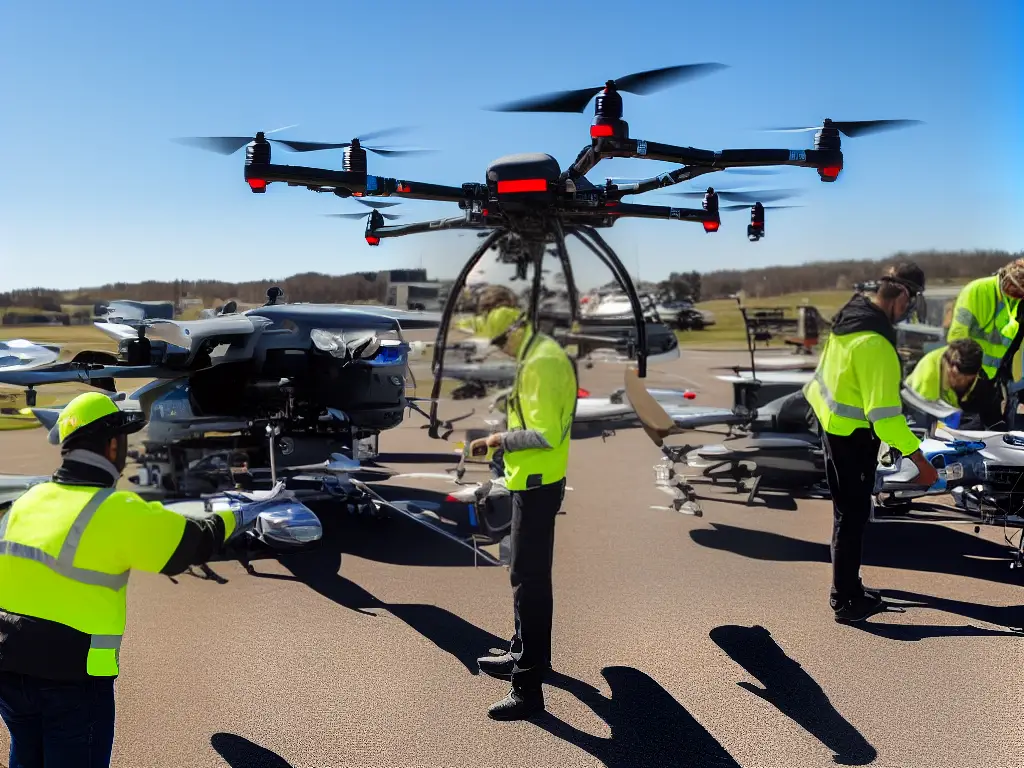
Community and Networking
In addition to following proper care and maintenance guidelines, becoming a skilled DJI Mini 3 Pro and Air 2s user often involves joining the drone community and connecting with fellow enthusiasts. Participating in online forums and discussion boards enables you to learn from individuals who are experienced with these specific drone models, providing valuable insights and advice on their use. Websites like DJI’s official forum, MavicPilots, and Reddit are all packed with information about the DJI Mini 3 Pro and Air 2s, their features, and effective techniques for using them, ensuring a smooth transition through the learning curve.
Drone clubs and user groups provide another great opportunity to improve your skills regarding DJI Mini 3 Pro and Air 2s. Many cities have local clubs where drone enthusiasts meet regularly to share experiences, conduct workshops, and organize events like drone races and photography shoots. Attending these meetups is an excellent way to learn from others, exchange tips, and explore the latest updates on DJI drones. In addition to local clubs, consider joining online clubs and Facebook groups to interact with drone users from around the world, which can broaden your exposure to a diverse range of tactics, tips, and best practices.
Event participation is also vital in augmenting your knowledge of DJI drones. Enthusiasts often organize events such as workshops, webinars, and conferences that aim to educate attendees about the intricacies of drone flying, photography, videography, and drone maintenance. Watching and participating in these events will enable you to learn from experts in the field, expand your skillset, and gain hands-on experience with not just the DJI Mini 3 Pro and Air 2s, but other drone models as well.
Furthermore, sharing personal experiences with the DJI Mini 3 Pro and Air 2s within the drone community can be a valuable learning experience. Creating content such as blog posts, videos, and podcasts showcasing your own explorations and findings can help engage people who are interested in these specific drone models, leading to a constructive exchange of information. This could also help strengthen your understanding and reinforce your skills in using these drones, as the process of explaining and demonstrating how to use them requires a solid comprehension of their functionalities.
Finally, participating in online competitions and challenges focused on drone photography and videography can be an excellent way to refine your skills with the DJI Mini 3 Pro and Air 2s. Many drone communities host contests where pilots showcase their best work, explore new techniques and push their abilities to the limit. By participating in these competitions, you will learn from the best in the field, receive constructive feedback from judges and peers, and gain motivation to further develop your skills with DJI drones.
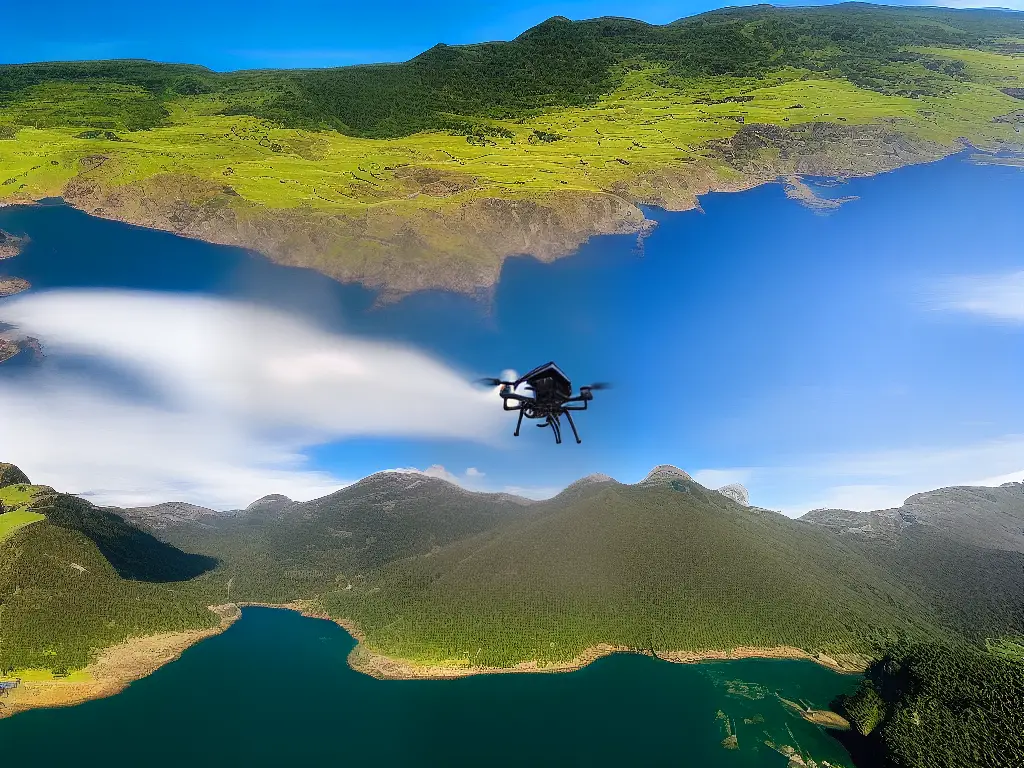
As you immerse yourself in the exhilarating universe of DJI drones, an array of opportunities unfolds. The DJI Mini 3 Pro and Air 2s offer distinct features, capabilities, and potential for creative expression. By honing your skills in flying, capturing, and editing, you will be better equipped to evaluate the strengths and weaknesses of each model and make informed decisions regarding your personal preferences. Finally, connecting with fellow drone aficionados in forums, clubs, and events sets the stage for endless growth, support, and inspiration. So, take flight and embark on your remarkable drone adventure!
Originally posted 2023-05-18 16:26:11.

